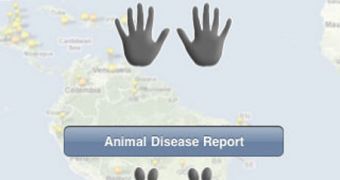Officials at the United States Geological Survey announce the launch of two new public tools, that allow people to report sick or dead animals in areas across the United States. This could help curb the spread of epidemics that can affect the human population as well.
Diseases can break out in the wild just as well as they do in the world's most populated cities, experts say, and this is precisely why the new public health tools were needed.
People are encouraged to use the Wildlife Health Event Reporter (WHER) in order to signal any dead or sick wild animal they may come across as they hike through the country side.
The renowned website HealthMap.org has agreed to modify one of its mobile phone applications in such a manner that it now accepts and redirects data to the WHER website.
The app, called “Outbreaks Near Me,” has been altered so that a new menu appears, which asks users if they want to report a human or a wildlife disease outbreak.
WHER was created by USGS National Wildlife Health Center researchers in collaboration with experts from the Nelson Institute for Environmental Studies at the University of Wisconsin-Madison (UWM).
“Avian influenza, SARS, West Nile virus, and rabies are just a few of the rogues’ gallery of human diseases in which wildlife play a role,” says Joshua Dein, a USGS expert that contributed to developing the new tool.
“Seventy-five percent of recent emerging infectious diseases in humans began as animal infections, and most of these have involved wildlife,” the scientist goes on to say.
“If these tools had been available 10 years ago, we might have had an earlier identification of West Nile virus by people reporting that they were seeing dead crows in their backyards,” Dein explains.
Within WHER, the group developed a feature that allows for wildlife officials in affected ares to be notified when a report concerning animals in the regions they control is issued.
Their data are made available to the person that made the sightings, so that the official can get more relevant data on the actual situation.
“These tools are the first with the capacity to accept wildlife health reports from anywhere on Earth and deliver wildlife disease information to the wildlife and medical communities,” explains the associate director of the Nelson Institute, Lewis Gilbert

 14 DAY TRIAL //
14 DAY TRIAL //